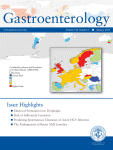JBC:Nurr1可能是神经元存活的关键基因
2012-04-20 Beyond 生物谷
巴塞罗那自治大学(INC-UAB)神经科学研究所的研究人员发现Nurr1基因在神经元存活中所发挥的基本作用与突触活动有关。这一发现发表在Journal of Biological Chemistry杂志上,这项研究帮助科学家了解神经连接的变化,神经连接变化是已知的导致早期认知功能障碍和阿尔茨海默氏病的神经退行性疾病的特点。 在大脑的发育过程中,如果神经元之间不建立必要的连接的话,成千上万的神经元
巴塞罗那自治大学(INC-UAB)神经科学研究所的研究人员发现Nurr1基因在神经元存活中所发挥的基本作用与突触活动有关。这一发现发表在Journal of Biological Chemistry杂志上,这项研究帮助科学家了解神经连接的变化,神经连接变化是已知的导致早期认知功能障碍和阿尔茨海默氏病的神经退行性疾病的特点。
在大脑的发育过程中,如果神经元之间不建立必要的连接的话,成千上万的神经元会死。调节神经元存活和死亡的过程对成人大脑的脑连接的形成很重要。
然而,突触活动对这些神经元存活的影响不仅限于发育中的大脑中,它也是成人大脑发育的根本。突触活动丧失的话,神经退行性疾病如阿尔茨海默氏症患者的认知会受损,这些疾病中也会有神经元死亡。尽管这一进程的重要性,但目前还没有明确突触活动调控神经元存活的分子机制。
UAB的神经科学研究所研究员José Rodríguez lvarez等发现突触活动调控了一个基因以及神经元的存活。通过大规模的基因活性分析,研究人员发现了数十个基因被突触活动调控。研究表明在所有的基因中,Nurr1基因在神经元的生存发挥的了关键作用。研究人员发现,当这一基因的活性被沉默时,神经元会死亡。

doi:10.1074/jbc.M111.272427
PMC:
PMID:
Nurr1 Protein Is Required for N-Methyl-D-aspartic Acid (NMDA) Receptor-mediated Neuronal Survival
B. Barneda-Zahonero, J.-M. Servitja, N. Badiola, A. J. Minano-Molina, R. Fado, C. A. Saura, J. Rodriguez-Alvarez
NMDA receptor (NMDAR) stimulation promotes neuronal survival during brain development. Cerebellar granule cells (CGCs) need NMDAR stimulation to survive and develop. These neurons differentiate and mature during its migration from the external granular layer to the internal granular layer, and lack of excitatory inputs triggers their apoptotic death. It is possible to mimic this process in vitro by culturing CGCs in low KCl concentrations (5 mm) in the presence or absence of NMDA. Using this experimental approach, we have obtained whole genome expression profiles after 3 and 8 h of NMDA addition to identify genes involved in NMDA-mediated survival of CGCs. One of the identified genes was Nurr1, a member of the orphan nuclear receptor subfamily Nr4a. Our results report a direct regulation of Nurr1 by CREB after NMDAR stimulation. ChIP assay confirmed CREB binding to Nurr1 promoter, whereas CREB shRNA blocked NMDA-mediated increase in Nurr1 expression. Moreover, we show that Nurr1 is important for NMDAR survival effect. We show that Nurr1 binds to Bdnf promoter IV and that silencing Nurr1 by shRNA leads to a decrease in brain-derived neurotrophic factor (BDNF) protein levels and a reduction of NMDA neuroprotective effect. Also, we report that Nurr1 and BDNF show a similar expression pattern during postnatal cerebellar development. Thus, we conclude that Nurr1 is a downstream target of CREB and that it is responsible for the NMDA-mediated increase in BDNF, which is necessary for the NMDA-mediated prosurvival effect on neurons.
本网站所有内容来源注明为“梅斯医学”或“MedSci原创”的文字、图片和音视频资料,版权均属于梅斯医学所有。非经授权,任何媒体、网站或个人不得转载,授权转载时须注明来源为“梅斯医学”。其它来源的文章系转载文章,或“梅斯号”自媒体发布的文章,仅系出于传递更多信息之目的,本站仅负责审核内容合规,其内容不代表本站立场,本站不负责内容的准确性和版权。如果存在侵权、或不希望被转载的媒体或个人可与我们联系,我们将立即进行删除处理。
在此留言










#JBC#
48
#关键基因#
46